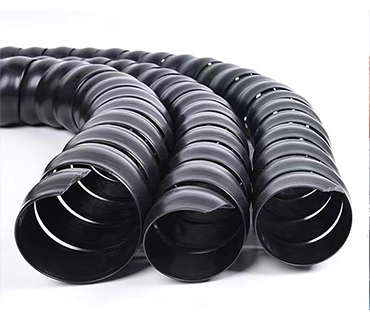Fireproof sleeve is a commonly used industrial high-temperature protection product with properties such as high temperature resistance, flame retardancy, abrasion resistance, and aging resistance. It is often used to protect various cables, pipes, and oil pipes from the effects of high temperatures. However, what are the common problems that may arise when using fireproof sleeve?
1. Common problems with fireproof sleeve:
(1) Choosing the wrong specifications, improper installation or incorrect material selection can result in reduced protection effectiveness and shortened usage time.
(2) Choosing the wrong specifications: This problem mainly occurs when customers are not well-informed about the specifications of the sleeving they need. If the specifications are too small, the sleeving cannot be installed, and if they are too large, it not only takes up space but also has defects in the protection, leading to reduced protection effectiveness.
(3) Improper installation: This problem occurs when customers are not careful enough during installation or fail to check whether there are any waste or sharp objects that will hinder the installation of the protective equipment for fireproof sleeve. Consequently, the protective performance may be reduced.
(4) Incorrect material selection: This mainly happens because customers are not well-informed about the working conditions. Different materials have different temperature-resistance strengths. If the customer chooses fireproof sleeve that is not in line with actual protection needs, the life of the sleeving will be shortened.
2. What are the commonly used materials for fireproof sleeve?
The development of industrial production has driven the frequent application of various protective sleeving. Fireproof sleeve is one of them, which is used to protect various pipeline equipment from damage. Therefore, what materials do fireproof sleeve manufacturers typically use?
The first kind is alkali-free glass fiber: because alkali-free glass fiber is a performance-excellent inorganic non-metallic material, it has good insulation performance, temperature resistance, corrosion resistance, and in the temperature resistance area it is a high-quality material. It also has good reinforcement performance, and is commonly woven into pipes or cloth, as a material for fireproof sleeve production.
The second kind is silicon rubber or silicone resin: both materials are high-quality materials in the temperature resistance area, with characteristics such as high temperature resistance, heat resistance, fire resistance, insulation, non-toxic and tasteless. They are both excellent materials for surface treatment that protects against temperature, heat, fire, and other hazards.
There are many advantages to using fire sleeves to protect cables. It can not only effectively protect cables from damage but also quickly organize cable lines, solve various customer concerns, and improve the overall appearance of the workshop.

















